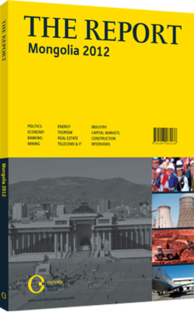Gobi: Garments & textiles
THE COMPANY: Gobi was established in 1981 with Japanese economic and technical assistance to process natural goat and camel hair and to produce cashmere and camel wool products from these fibres. The company has since developed into one of the five largest cashmere producers in the world, and has about 1000 employees.
Gobi was partially privatised in 1993 when 26.5% of its equity was floated on the Mongolian Stock Exchange. In July 2007, the remaining stakes were sold for $13.85m to a Japanese consortium of Toshisoke Investment Bank and HS Security. Gobi exports its products to about 200 companies in 40 countries. The products are sold at retailers and boutiques in 20 major cities across the world, such as New York, Tokyo, London, Paris, Berlin, Hamburg, Milan, Brussels, Prague, Moscow and Seoul. Furthermore, Gobi exports semi-processed goat hair fibre to English, Italian, Japanese and American textile producers who then produce finished goods.
SALES: Gobi sells its finished products through nine outlets and five vendor companies in the domestic market, and via 24 outlets and 140 vendor companies in the international market. On average, Gobi exports around 80% of its products, of which 60% go to European countries through vendor companies. However, as of October 2011, 57% of its sales were in the domestic markets as internal demand grew and revenue from exports were less than expected due to an abrupt climb in raw material prices. Spells of unusually low temperatures, or dzud, which effectively transform the winter into a natural disaster, killed millions of animals in 2009 and 2010. The result of this was that goat fibre prices rose by over 80% between 2009 and 2010, and over 30% between 2010 and 2011.
According to management estimates, since privatisation, Gobi’s domestic market share of finished products grew by 5-10% per year and reached 55-60% in 2010. About MNT24bn ($18.7m) worth of products were sold in the first 10 months of 2011, which is 160% more than total 2010 sales. The price of goods sold also increased by 167% between 2010 and 2011 due to the rising price of cashmere. Still, Gobi was able to increase its net profit by 152% from the 2010 levels as of Q3 2011, at MNT28m ($21,840).
Assets reached some MNT53bn ($41.3m) as of Q3 2011, which is 58.13% more than the 2010 assets. This growth was driven by an 83.58% increase in fixed assets during the first nine months of 2011, as a part of the technological improvement investments. Gobi has traditionally financed its operations through debt financing from the government of Mongolia on a yearly basis. The company borrows in the spring in order to be able to purchase the seasonally produced raw animal fibres, and pays the debt in the autumn as the new products are sold.
DEVELOPMENT STRATEGY: Aside from increasing its market share, Gobi has invested heavily to build up a luxury brand by improving its quality and design. In April 2009, Gobi signed a three-year Strategic Partnership Agreement with Italy’s Valdani Vicari & Associates as consultants for the product development. As a result of these efforts, the quality and design of Gobi products have significantly improved.
From 2011, Gobi hired Italian designer Saverio Palatella to create a new high-end collection for the Gobi brand. In addition, the company purchased state-of-the-art machines to produce and knit thin-gauge cashmere threads to create thinner garments more suited for warmer climates in Europe and other countries that Gobi exports to.
For the last five years, Gobi has invested close to MNT15bn ($11.7m) in purchasing 260 new pieces of manufacturing equipment from Germany, Japan, Italy and France. The firm’s management believes its capital investment is necessary for its quality and design improvement goals. The next step for the company would be to build brand recognition and reputation globally through marketing strategies.
You have reached the limit of premium articles you can view for free.
Choose from the options below to purchase print or digital editions of our Reports. You can also purchase a website subscription giving you unlimited access to all of our Reports online for 12 months.
If you have already purchased this Report or have a website subscription, please login to continue.

